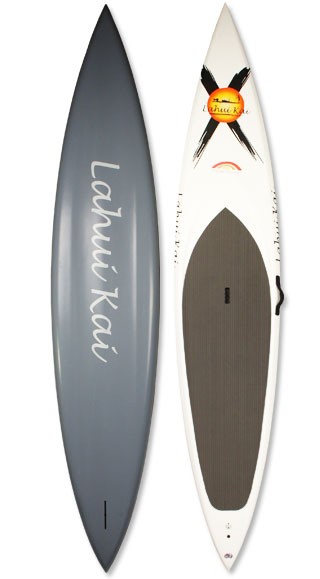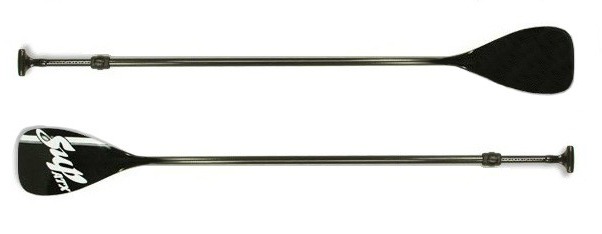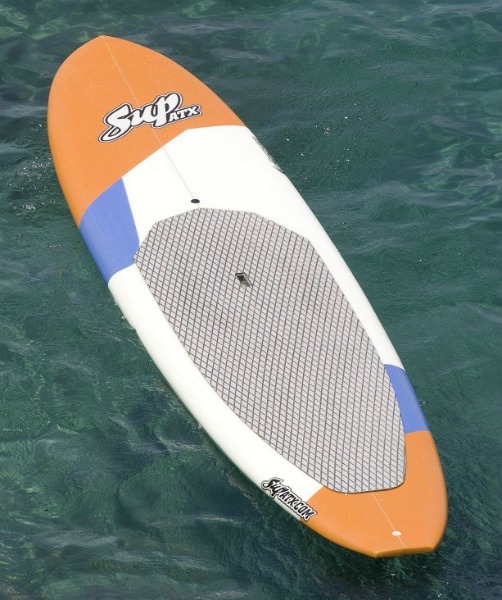Your Guide To Stand Up Paddling Lake Powell
There is a new paddling sport that is sweeping the country. It is called stand up paddling or SUP.
It’s fun, easy to learn, doesn’t require a lot of equipment, develops core muscles and balance, and it delivers a complete body and cardiovascular workout.
It's the perfect training activity for surfers, skiers and paddlers.
When you’re tired of paddling standing up, you can kneel or sit down and paddle.
Stand up paddling had its origins in Hawaii in the 1960’s where it was used as a surf board, but with an added twist: it could be propelled across the waves with a long single-bladed paddle.
|
It wasn’t long before someone discovered it could be used competitively for racing up and down the coast line, and special boards were designed to be used primarily for racing. About ten years ago, the sport made its way to California where it continued to be used for surfing, racing and even as a platform for yoga. As enthusiasm grew for the sport, it moved inland to the rivers and lakes across the country; finding converts any place there was water. Again, the designers went to work and came up with a board that was longer and wider and better suited to flat-water boarding. Today there are four general categories of Stand Up Paddleboards. These categories are based on the type of activities the board will be used for: Surfing, All-Around, Touring and Windsurfing. |
 SUPATX Lahui-Kai - Photo: Courtesy SUPATX |
• Surfing: Generally shorter, with a more narrow nose and tail and more curve. They are slower and don’t track well on flatwater. They generally less stable than a longer, wider board.
• All-Around: Designed to perform well in all conditions. They are wide enough to be very stable. They have decent glide and tracking for flatwater paddling or open ocean touring and have enough curve and sidecut for decent surf performance. These are good first time boards.
• Touring: Designed for flatwater, open ocean paddling and going from point to point with the wind at your back. Unless they are “Race” boards, which are narrow for speed, they are generally wide and stable enough for beginners.
• Windsurfing: An option available on some all-around boards where a special fitting is provided on the deck to allow for the mounting of a windsurf sailing rig.
Paddleboard Construction:
Most paddleboards have a polyurethane foam core and an ultra-durable polyethylene outer shell (like a kayak but lighter weight).
However, having made this statement, let me say further that there are probably as many exceptions to this statement as there are paddleboard manufacturers.
Two of the obvious exceptions are wood boards and inflatable boards.
Wood boards are even offered in kit form by such companies as Surfwood Boards whose kits consist of Precision Cut CNC (Computer Numerically Controlled) Wood Parts, fiberglass cloth, epoxy resin, resin thickner, mixing sticks and cups, plus an instruction manual to tell you how to put it all together.
The finished board is 11”2” long, 29” wide and weighs 32 pounds.
According to Surfwood Boards,
“Assembly is quick and easy {as} the precision cut CNC parts are slotted and tabbed to index perfectly in the proper locations.
In fact assembly of the paddleboard is much like putting together a model car or airplane just on a larger scale and with less parts.
Once assembled the board is sheathed in fiberglass cloth and the fin box installed.”
If you think you might be interested in something like this, check them out at their website where they have photos of the construction of their new Mahi Mahi Stand Up Paddleboard.
If you don’t have a lot of storage space or a carrying rack on your vehicle, you may want to consider inflatable stand up paddleboards.
Most of them come with their own carrying case and can be carried in the back seat or trunk of a car.
They can even be rolled up and carried in a backpack for hands free carrying.
Stand Up Paddling Accessories:
Personal Flotation Devices - In October of 2008, the US Coast Guard determined that SUPs were “vessels” and therefore when outside surf or swim zones or bathing areas are required to carry a lifejacket, or Personal Floatation Device (PFD), a whistle and, if out after dark, a flashlight to give fair warning to other boaters that they're in the area.
Any person under the age of 13 must wear a Coast Guard approved Type I, II, III or V PFD while on a watercraft while it is in use.

SUPATX Carbon Fiber Adjustable Paddle - Photo: Courtesy SUPATX
Single-bladed Paddle – Lengths are based upon the height of the paddler. Typically should be between 8 and 10 inches longer than the paddler’s standing height.
Adjustable paddles are great when one paddle is to be used by paddlers of different heights.
The carbon fiber adjustable paddle from SUPATX can be adjusted from 68" to 83."
Ankle Leash – Can vary according to manufacturer but typically between 10 and 11 foot lengths.
OK. I’m convinced….
So what should I buy for Stand Up Paddling at Lake Powell?
The first consideration should be the board length.
This is normally based upon the weight of the paddler; the heavier the paddler, the longer the board.
However, according to SUPATX,who in their own words is, “… the worldwide leader in manufacturing and selling paddle boards directly online, through retailers and via large national chains.”

SUPATX LR1 12" Paddleboard - Photo: Courtesy SUPATX
Most paddlers, of any weight, when buying their first and only board should buy a 12 foot length board.
It simply provides the greatest flexibility of use.
“You will find as a paddle board owner than {sic} many people will want to try out your board.
So, even if you weight {sic} only 100 lbs, having a 12 foot board will allow any friends or family who may weigh much more to comfortably be able to paddle on their first try.
At 12 feet in length, the board would be more than necessary to float you as a lighter person, but the larger board will not impair your ability to paddle comfortably.
Additionally, with a 12 foot board, you can easily bring a child, a pet dog, a cooler etc along with you for the ride.
So for overall stability and flexibility of use, the great majority of customers buying their first board (and only one board) can't go wrong with 12 foot length.”
If you are buying the board specifically for younger paddlers or smaller paddlers who do not have the need for an 11 foot or 12 foot board, you might want to consider a 10 foot board.
The 10 foot board is great for kids!
The second consideration is based on how you will use the board.
If most of your usage is for “normal” activities, a board in the “all around” category would likely suffice.
If, on the other hand, you plan to use your board mainly for racing or highly specialized activity, then you might want to consider a specialty board.
According to SUPATX, “Nearly 100% of first time buyers go with boards for ‘normal’ use.”
Other considerations when buying your first board:
• An integrated handle - Handles make carrying a board comfortable and easy.
• A traction pad installed on the top of the board - This makes standing more comfortable and provides greater traction while riding.
• Leash plug – Used to attach the board to your ankle to prevent the board from getting away from you if you fall.
• Built-in automatic air vent - It works automatically, all the time. This allows the core of the board to breathe without ever having to remove and replace the air vent.
Boards which come with vent plugs need to be removed for them to work.
This could result in losing the plug or forgetting to let the board breathe which could cause damage to the board.
Okay. You have your board and accessories, now where do you go to paddleboard?
Good question.
Lake Powell is so vast and has so many beautiful coves and canyons that it would be impossible to try to list all the places where you can stand up paddle.
As with kayaking and canoeing, it helps to have motor support to transport your paddleboard to some of these locations.
Having said that, I will share with you a couple locations which can be accessed by automobile and provide great paddleboard opportunities.
Lone Rock Beach – Located 12 miles from Page, AZ off state highway 89 and about 4 miles northwest of Wahweap Marina.
There are sandy beaches, dry camping and beautiful scenery.
Lone Rock stands like a beacon beckoning you to come explore.
It is a great place for the stand up paddling beginner.
Bullfrog Bay - another launch site with sandy beaches. By road, it is 283 miles from Page, AZ and 136 miles from Blanding, Utah. By boat, Bullfrog Bay is 95 miles from Wahweap Marina.
Stanton Creek Primitive Campground – Located at the end of Highway 276 about a mile from the launch ramp at Bullfrog Marina.
There is dry camping only with no facilities. However, there are ample flat and sandy campsites areas with plenty of small coves and inlets for stand up paddling.
For some other beautiful locations for Lake Powell Paddling, see my page on Lake Powell Kayaking.
There are no roads to these places, and, for ease of access, you should have motor support to reach them.
Where To Rent Paddleboards:
Kayak Powell
PO Box 4780
816 Coppermine Road
Page, Arizona 86040
(928) 660-0778
www.kayakpowell.com
Twin Finn Kayak and SUP Rentals
816 Coppermine Road
Page, AZ 86040
(928) 660-9370
www.twinfinn.com
References and Resources for Stand Up Paddling:
SUPATX
http://www.supatx.com/
BIC Sport
France
http://www.bicsup.com/
Liquidlogic Kayaks
http://liquidlogickayaks.com/
Phoresia
http://www.phoresia.org/?p=70
Surfline
http://www.surfline.com/surf-news/stand-up-paddleboards-classified-as-vessels-by-us-coast-guard-surf-zone-not-affected-stand-up-and-be-counted_19530/
Surfwoodboards.com
11824 Watertank Rd.
Burlington WA 98233
Phone 360.635.7164
Fax 360-757-8284
e-mail: matthew@fiberglasssupply.com
Comments and Suggestions
I started this website in February 2011, and, quite honestly, it has not lived up to my hopes and expectations.
I would appreciate some honest appraisals and suggestions as to how to improve it.
Return From Stand Up Paddling to Boating Lake Powell
Return From Stand Up Paddling to Lake Powell Country

